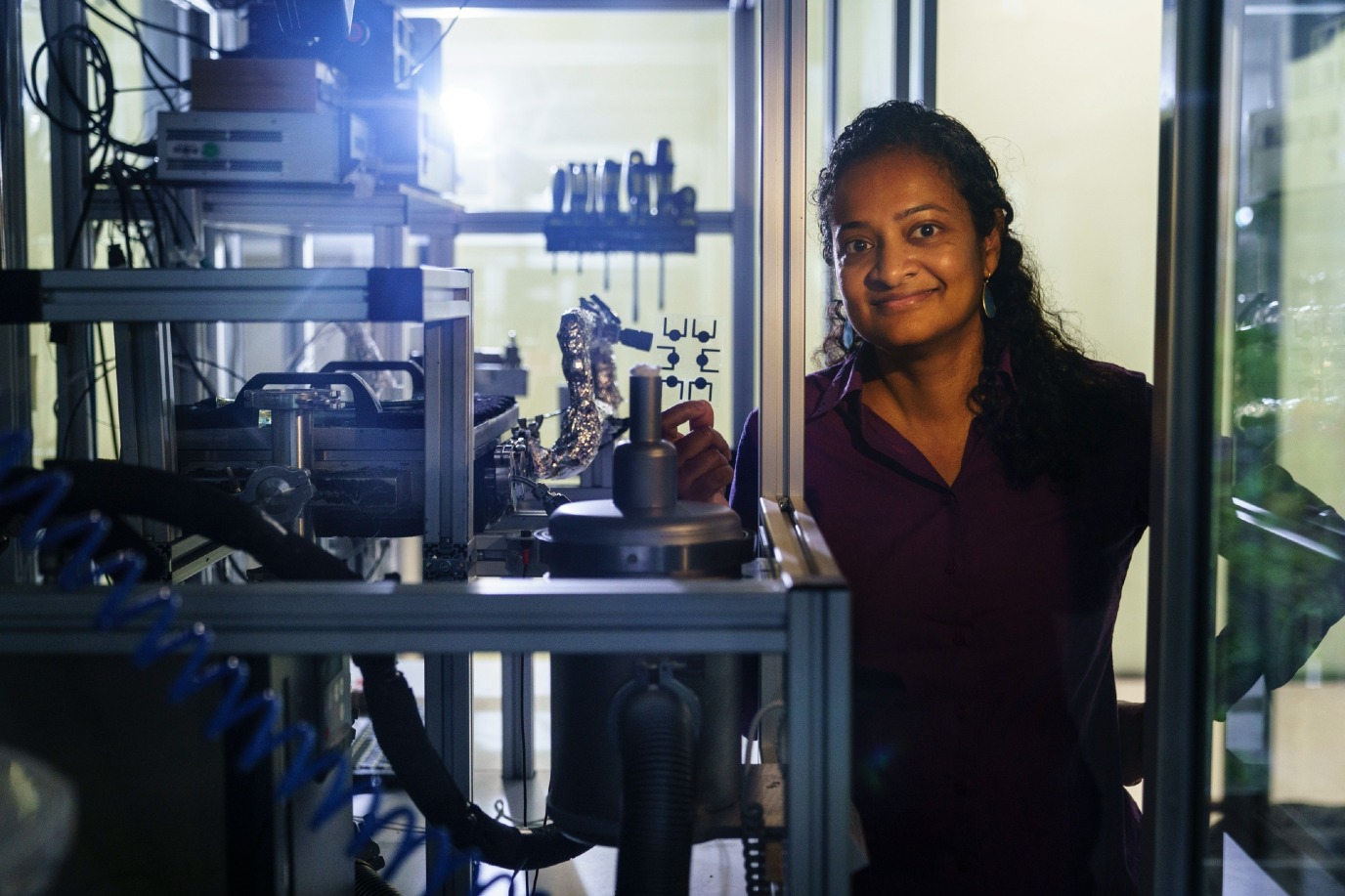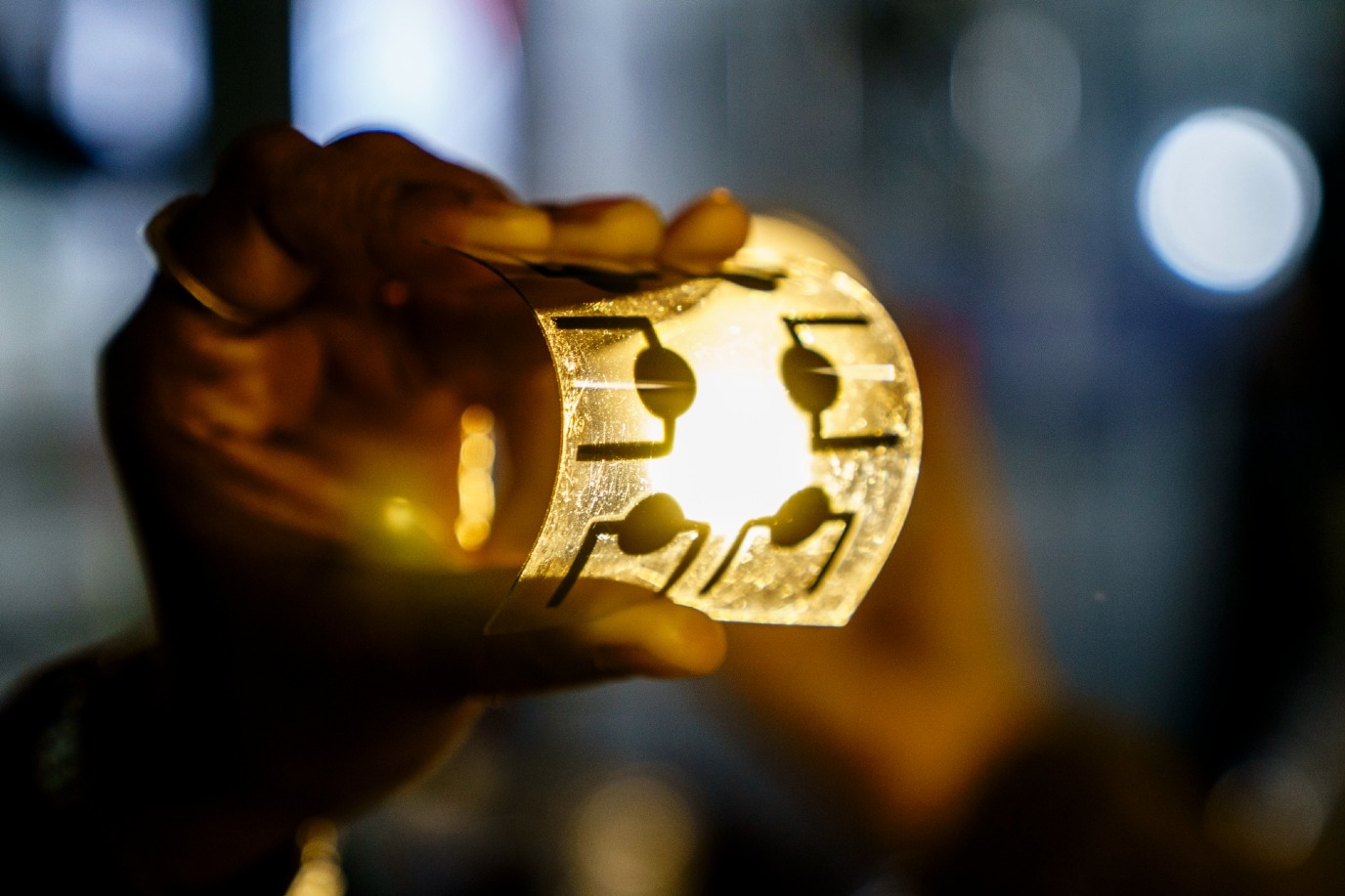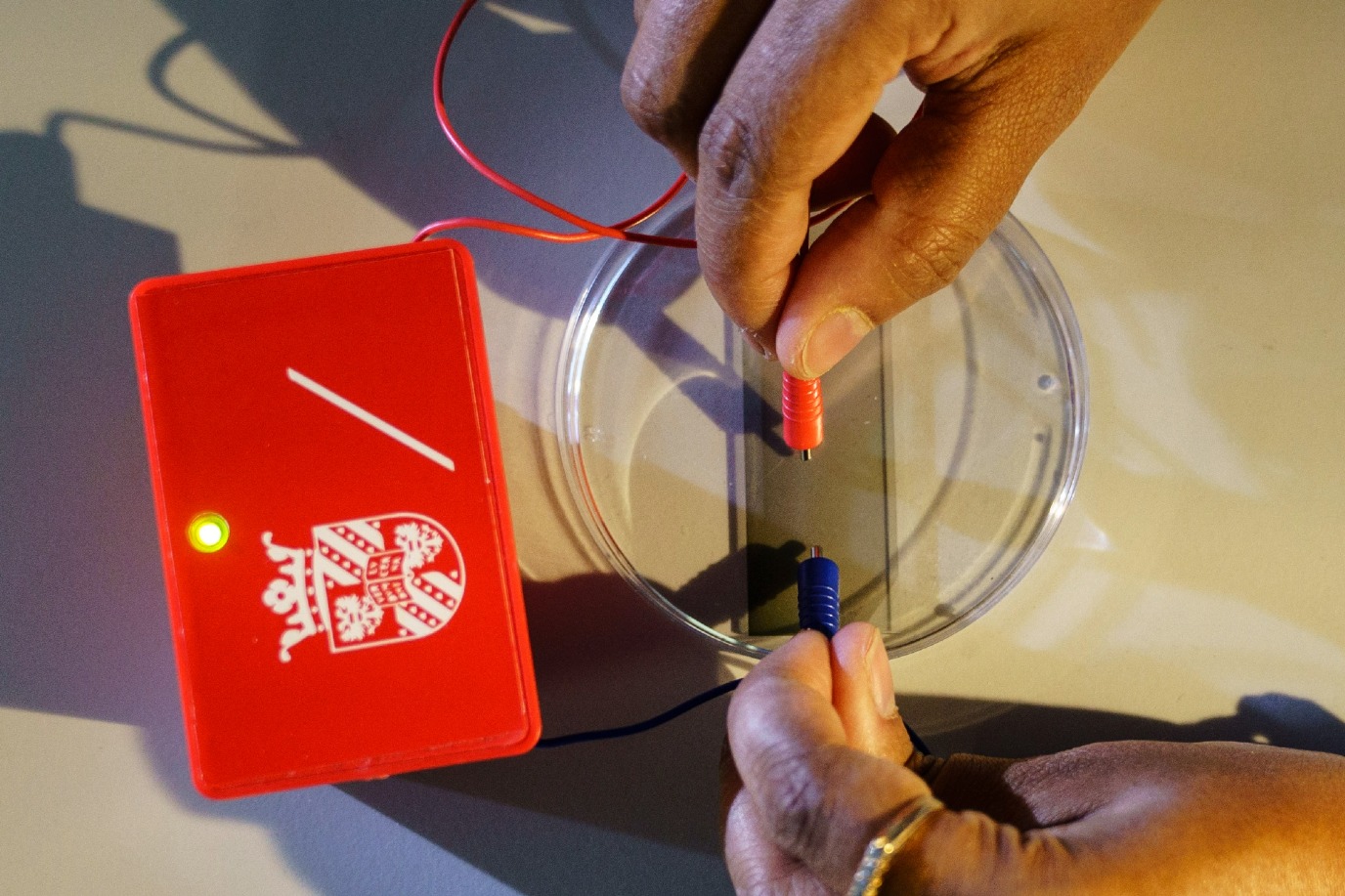Flexibele zonnepanelen en een getatoeëerde sensor
De zwarte stippen en lijnen op dit plastic plaatje geleiden stroom, en zijn net zo flexibel als het plastic eronder. En dat is bijzonder, vertelt adjunct hoogleraar Polymeertechniek Ranjita Bose: ‘Het is een geleidend polymeer, dat de flexibele eigenschappen van plastic combineert met de geleiding van metalen.’ Bose kan deze geleidende coating in elk gewenst patroon aanbrengen, ook op kwetsbare materialen zoals textielvezels of de huid.



De toepassingen van zo’n geleidend polymeer lijken haast eindeloos. Bose somt op: ‘Denk aan zonnepanelen op een flexibel oppervlak, bijvoorbeeld op je rugzak. Of een flexibel beeldscherm, een batterij waar geen vloeistof maar een gecoate vaste stof in zit of een sensor die direct op het lichaam gedragen kan worden.’ En dat laatste dus heel letterlijk: in de vorm van een tattoo.
Het voorbeeld in de foto’s is specifiek ontwikkeld voor een medische toepassing: het monitoren van wondgenezing. ‘Wanneer een wond begint te ontsteken, gaat de zuurgraad omlaag,’ legt Bose uit. Dat beïnvloedt hoe goed de coating stroom geleidt. Wanneer je deze coating direct op de huid aanbrengt, vlakbij een wond, kun je dus vroegtijdig signaleren wanneer het mis dreigt te gaan.
Promovendus Adrivit Mukherjee tatoeëerde het spul al eens op zijn huid, nadat labonderzoek had uitgewezen dat het materiaal onschadelijk is voor menselijk weefsel. Dat dat kan, is dus precies wat zo bijzonder is aan dit werk, legt Bose uit: ‘Normaal zou je een geleidend polymeer in meerdere stappen maken: eerst maak je het polymeer, dan volgt een nabewerking om het geleidend te maken. Maar als het materiaal dat je wilt coaten kwetsbaar is, zal het die nabewerking niet doorstaan. Onze geleidende coating werkt in één stap, zonder oplosmiddelen, bijtende zuren, of extreme temperaturen.’
Tekst: FSE Science Newsroom | Charlotte Vlek
Foto’s: Reyer Boxem
In Makers van de RUG belichten we elke twee weken een onderzoeker die iets concreets heeft ontwikkeld: van zelfgemaakte meetapparatuur voor wetenschappelijk onderzoek tot kleine of grote producten die ons dagelijks leven kunnen veranderen. Zo dragen RUG-onderzoekers bij aan oplossingen voor grote wetenschappelijke en maatschappelijke uitdagingen.
Techniekonderwijs en -onderzoek maken bij de RUG al decennia deel uit van een breed palet aan sterke disciplines en landelijk werken we steeds intensiever samen met de vier technische universiteiten.
Eerdere portretten van ‘Makers’ vind je op de overzichtspagina
Meer informatie
Meer nieuws
-
11 december 2025
Stormachtige planeten en een onverwachtse atmosfeer
-
09 december 2025
RUG-hoogleraar bij COP30: ‘Het is altijd drama’
